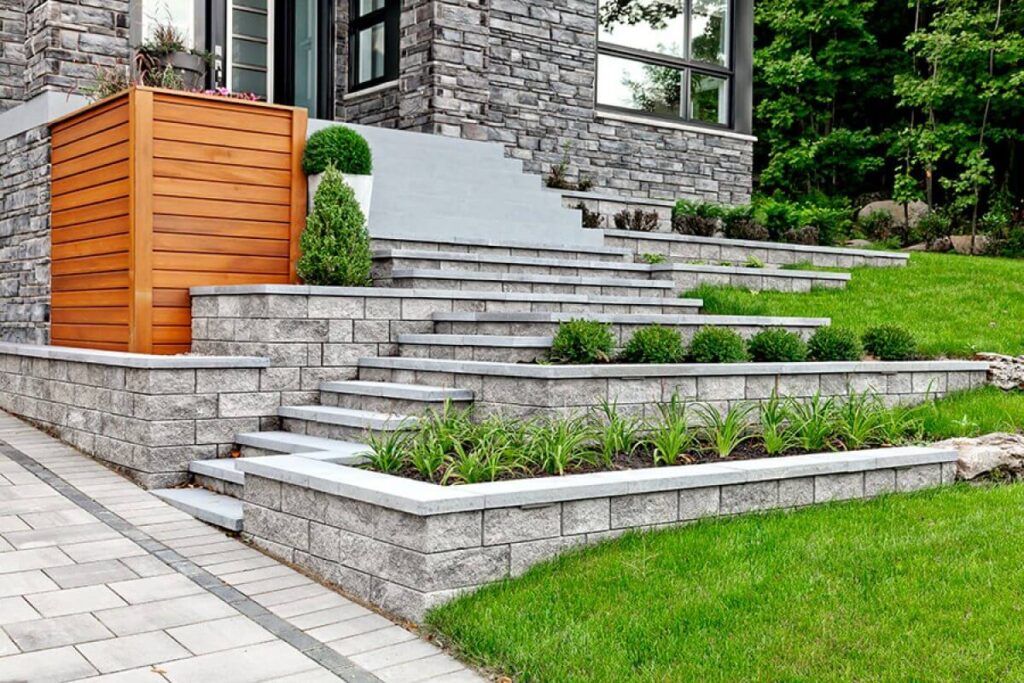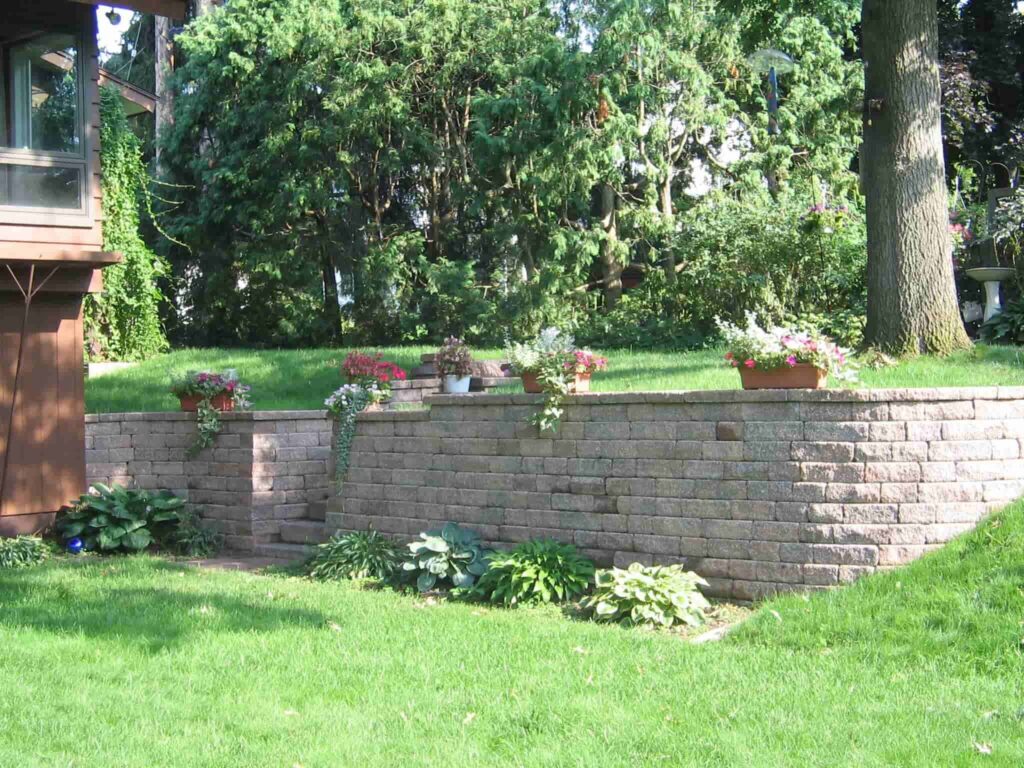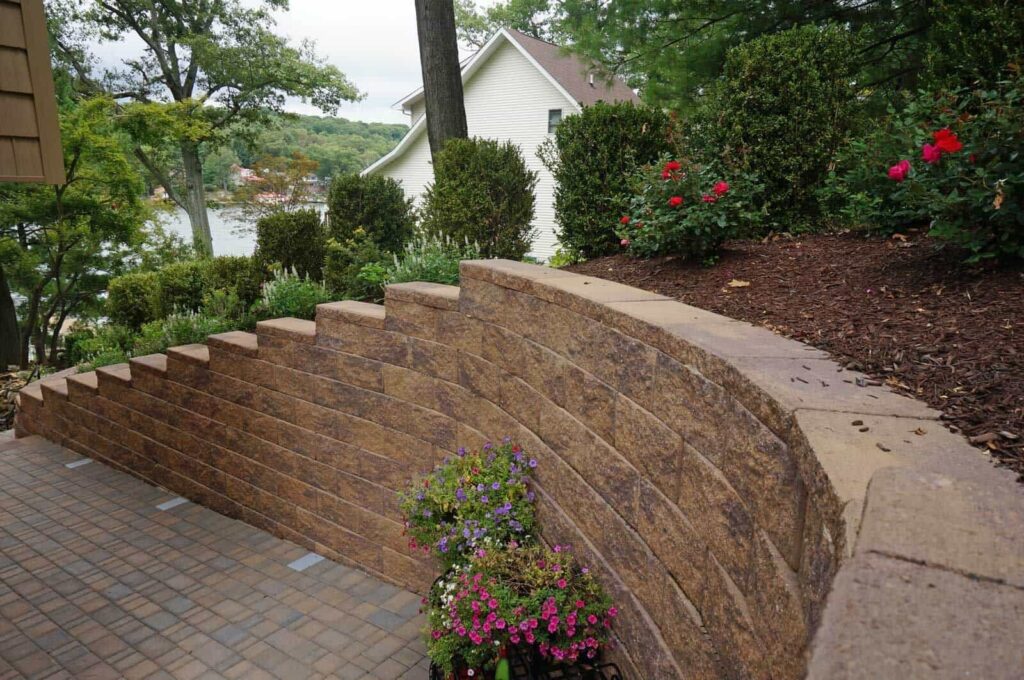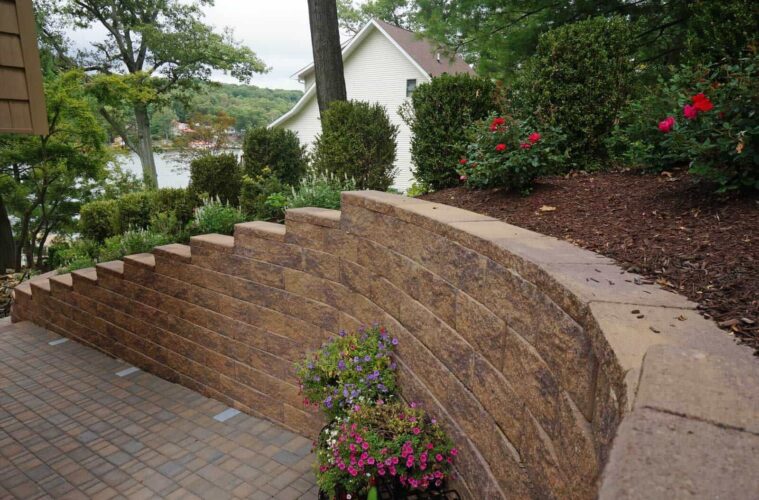If you’re new to having a backyard in your house because you previously rented apartments, you could be surprised to see that it comes with a retaining wall or two. Retaining walls are built using different types of materials, heights, and footing to provide a physical separation and barrier from one outdoor space to another.
There are different reasons why a home has a retaining wall. Here are 4 of them.
Holding Back Soil

source: airtasker.com
When there’s a substantial amount of soil behind the wall and then there’s a different area, the retaining wall creates necessary space between them. It can hold back the soil to avoid it flying freely onto the secondary area, whether that’s a patio or somewhere else. Instead, it will hit the wall and stay there. Ideally, the soil should be hard-packed, dry, and solid, rather than moist for the wall to be the most effective. Otherwise, it can lead to issues down the line.
Allows for Proper Drainage
The wall and drainage planning can help to funnel rainwater to the organized drainage. This is preferable to it occasionally flooding the garden, including overflowing onto the patio and other outdoor areas.
Occasionally, the retaining wall drainage can run into difficulties due to blockages and other encumbrances preventing it from working correctly. This requires some work to resolve. A retaining wall made with steel posts can provide a durable and reliable solution for drainage issues, as it can be designed to include drainage channels or perforated drain pipes that prevent water buildup behind the wall. Additionally, using steel posts in the construction of the retaining wall can ensure that the wall remains stable and secure, even in areas with high levels of water flow. If you’re looking for a practical and long-lasting solution for your retaining wall drainage issues, consider using a retaining wall made with steel posts
It most often occurs when there has been work with heavy machinery performed locally that has caused the soil to shift around. This can be potentially damaging to the drainage pipe beneath.
Design Choice

source: summitlandscapeinc.com
It’s not always necessary to have a retaining wall just for drainage or to separate two spaces in the backyard; they can also be added for their appearance. Performing double duty in this manner is not a bad thing. The use of different materials can provide visual separation from one part of the backyard to the next. This creates a much-needed definition and gives the backyard more character too.
Landscape gardening often includes additional low-level walls, an artificial rock formation, or another approach to create distinctive separation for different garden spaces. A necessary retaining wall can be incorporated into the overall design too.
For Practical Purposes

source: cornerstonewallsolutions.com
In a situation where the patio is raised higher than the lawn below it, the step down to the lawn may be difficult for people to navigate. If small kids are running around in the backyard, they could trip and fall headfirst into the garden if it’s too steep for them. A retaining wall will not only hold back the lawn or soil, but it can also provide a barrier to prevent small kids from accessing the garden that way. With the access narrowed to a smaller gap, it’s then possible to use a small safety gate to prevent access when sitting outside with young kids.



